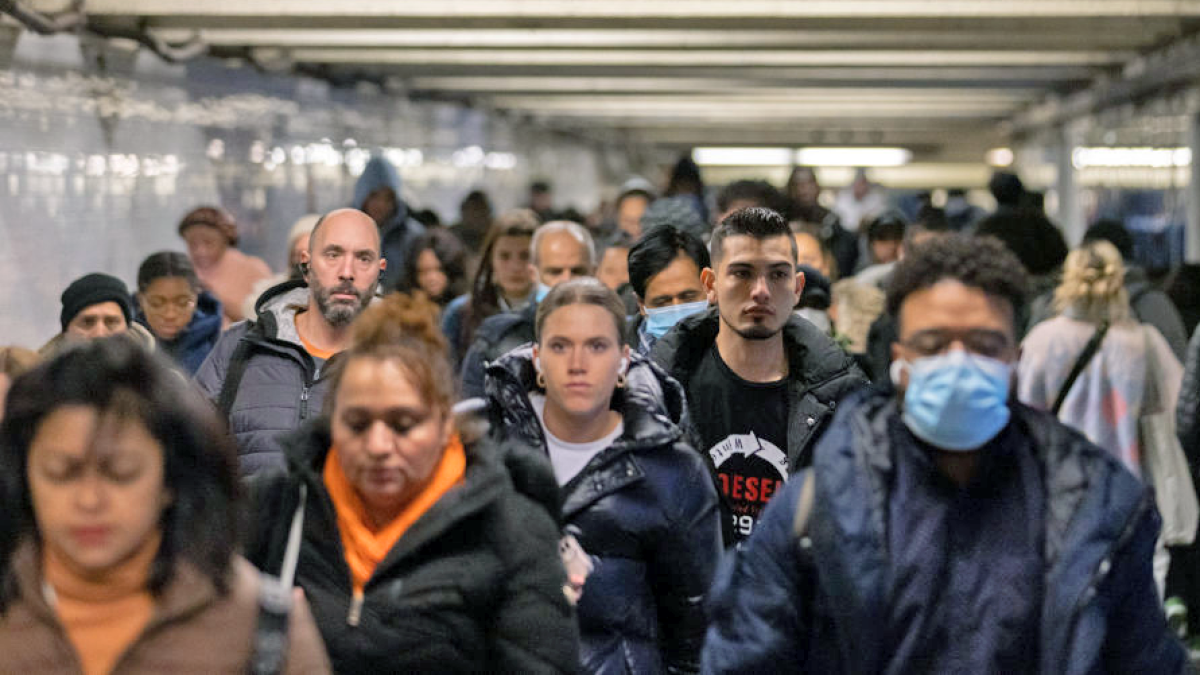What you should know
- Life expectancy in New York City fell to 78 years, a 4.6-year drop, between 2019 and 2020, the city’s health department said Friday.
- The role of the pandemic in reducing life expectancy was far from equal. For Hispanic New Yorkers, it fell in six years to 77.3; for black New Yorkers, life expectancy dropped by about five years, to 73. For white New Yorkers, it was a three-year drop, to 80.1.
- According to a state dashboard, more than 200,000 New Yorkers died in 2020, with less than half of those deaths due to COVID-19 and heart disease, the latter being the leading cause of death.
NEW YORK – A new report from the New York City Health Department revealed Friday that the life expectancy of New Yorkers has plummeted as a result of the COVID-19 pandemic, which has killed thousands of New Yorkers. -Yorkers and made many sicker, with some still feeling the effects of symptoms.
Life expectancy in New York City as a whole, regardless of demographics, fell to 78 years, a decline of 4.6 years, between 2019 and 2020, the department reported. This figure is largely due to the pandemic, but has also been driven by an increase in overdose deaths.
However, according to the report, the life expectancy of Hispanics in the Big Apple has declined the most compared to other groups. Hispanic New Yorkers now have a life expectancy of up to 77.3 years, which is 6 years less than in 2019 when the pandemic hit, the report explains.
Among other groups, black New Yorkers have a lower life expectancy of 5.5 years, or up to 73 years, and white New Yorkers up to 80.1 years, or 3 years less than in 2019.
For its part, the city’s 2020 death rate, fueled by the COVID-19 pandemic, has surpassed that of the infamous 1918 flu, according to new data released this week. The virus death rate in 2020 was about 12 times higher per 100,000 lives than in 1918.
Health data collected in the annual Vital Statistics Summary offers insight into the dire toll of the pandemic in 2020, as well as its lasting impact well into the future.
“This report is an important account of what we have been through and all that we have lost. It also reflects the importance of this moment,” said Health Commissioner Dr Ashwin Vasan. “Life expectancy for New Yorkers is falling, on top of the years of relative flattening before COVID-19, and that can’t continue.”
As noted, the virus wasn’t the only factor in the city’s declining life expectancy.
Unintentional overdose deaths have also played a disproportionate role among New Yorkers. Among a 42.2% increase in drug deaths between 2019 and 2020, the city found the highest death rate was among black New Yorkers.
The leading cause of death in 2020 was overwhelmingly COVID-19, but it wasn’t always no. 1. The two leading causes of death among New York residents were COVID-19 and heart disease, with cancer ranking third among all racial/ethnic groups.
State health officials call the drop in life expectancy between 2019 and 2020 one of the worst in decades. Before the pandemic, New York’s age-adjusted death rate had declined. After the pandemic began, the death rate rose 30% statewide and more than 50% in the city.
According to a state dashboard, more than 200,000 New Yorkers died in 2020, with less than half of those deaths due to COVID and heart disease, the latter of which is the leading cause of death.
The inclusion of this data by the Department of Health informs the agency’s program priorities. DOHMH is committed to using data to address persistent racial/ethnic and neighborhood inequalities, as well as to inform future policy decisions.
The Adams administration has already released a plan to reduce overdose deaths by 15% by 2025 and double the number of New Yorkers in mental health services. However, the Department of Health also recognizes that chronic diseases, such as heart disease, claim too many lives too soon. In the coming months, the City will develop and announce a plan to help New Yorkers live longer, healthier lives.
The Annual Vital Statistics Summary, the New York City Health Department’s annual report of births and deaths, is compiled by the agency’s Vital Statistics office. Its charts, graphs and figures present health statistics by racial/ethnic group, gender, age, neighborhood poverty, community district and municipality of residence. Mortality rates are adjusted for age when the adjustment facilitates comparisons over time and between geographic areas.

